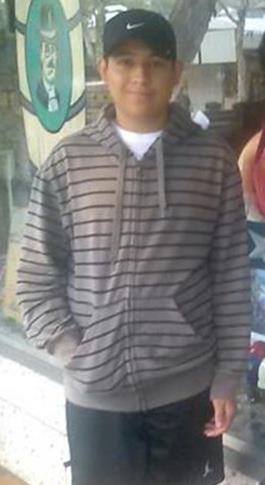On Friday afternoon, police officers in Nevada found the bodies of Elvira Canales-Gomez, 40, and Cesar Navarro, 9, decomposing in a suburban Las Vegas apartment. The two had been stabbed to death, and police soon identified a main suspect: 16-year-old Adrian Navarro-Canales, Elvira’s son and Cesar’s brother. Navarro-Canales, who had been missing since the murders, was arrested Wednesday in a food court on the Las Vegas strip and charged with two counts of murder. If the charges are true, Navarro-Canales’ name will be added to a short, horrific list of children who kill one or more of their parents and one or more of their siblings—or, in the technical term, commit parricidal familicide.
What drives children to murder their families? In a new book, Survived by One: The Life and Mind of a Family Mass Murderer, Northwestern University neuropsychologist Robert E. Hanlon plumbs the psyche of family mass murderers, focusing on Tom Odle, an Illinois man who at age 18 murdered his mother, father, and three siblings.* (Odle co-authored the book.) Odle’s original death sentence was commuted in 2003, and, since then, he has spent much time in therapy with Hanlon, trying to understand why, exactly, he did what he did.
Hanlon notes that children who murder their parents are almost always psychologically disturbed in one way or another. Anyone familiar with Truman Capote’s In Cold Blood will remember Perry Smith and Dick Hickock’s prison acquaintance Lowell Lee Andrews, who shot and killed his parents and sister in 1958. Andrews—dubbed “the nicest boy in Wolcott,” Kan., by a surprised neighbor—was diagnosed with schizophrenia after the murders; he told authorities that he killed his parents because he wanted to inherit the family farm. This aligns with two traits Hanlon cites as being common among children who kill their parents: mental disorders and the perhaps misguided belief that murder might bring them real or imagined personal gain.
Many children who murder their parents do so after suffering years of parental abuse. In the book’s introduction, Hanlon cites anthropologist Elliott Leyton’s argument that “the offender in cases of parricidal familicide, who is often the victim of long-term abuse by one or both parents, kills the family to escape an oppressive and/or abusive situation in which he feels entrapped.” Indeed, while Tom Odle’s mother was outwardly a devoted parent and active community member, psychological examinations of Odle around the time of his trial indicated years of physical and emotional abuse, including her habit of chaining her sons to a bed while she went out at night. “Every time I did something wrong I was told how much she hated ever having me and that she wished she had never had me,” Odle says in the book. “She would say that she wished I would die and be gone from her, because I wasn’t wanted. … According to her, I was a failure as a son; I was stupid.”
This sort of treatment led Odle to start using drugs, which in turn further alienated him from his mother; he killed his family on the same day that he had been ordered to move out of his parents’ house. Reflecting on the crimes in the book, Odle offers a glimpse into his fractured mindset on the day of the murders:
Why? I have no clue. I just know I’d had enough. It’s like this thing just chose me. I feel like it chose me, not me choosing it. … It was like I was looking at myself, from the outside. … Like it really wasn’t happening. Like a dream or something. But it was real.
I don’t know why I did it. I had to. I just had to.
This doesn’t excuse Odle’s crimes. It doesn’t even necessarily explain them. But it does help contextualize them, and context is important in cases like these. It’s not clear what motivated Adrian Navarro-Canales, if, indeed he’s the one who killed his mother and brother. But it’s important to understand that incidents like this don’t just come out of nowhere. They can often be traced back to long-standing problems that might have been addressed years earlier through mental health treatment and/or getting the child out of a bad familial situation. According to the Associated Press, the arrest warrant in the Nevada case says that the state plans to charge Navarro-Canales as an adult, and while I understand that impulse, it would be wrong to treat Navarro-Canales as just another murderer. Parricidal familicide is rarely the act of a rational, healthy mind. Anyone who does something like this is likely psychologically disturbed, and possibly has been a victim of abuse, and might well require treatment just as much as he deserves punishment.
*Correction, September 26, 2013: This post originally reported that the subtitle of Robert E. Hanlon’s book was The Life and Times of a Family Mass Murderer. The actual subtitle is The Life and Mind of a Family Mass Murderer.
